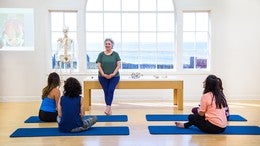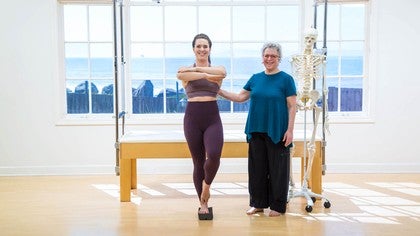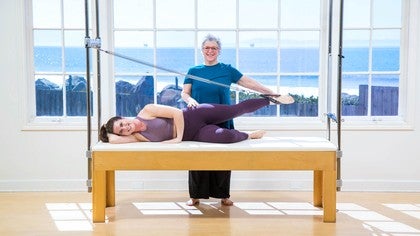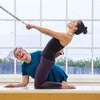Description
About This Video
Transcript
Read Full Transcript
Uh, in this tutorial we're going to talk about the psoas, the iliopsoas. Uh, if you go to [inaudible], any time I did a workshop, we talked more about the SOA as being a core muscle and in we did also a embodied, uh, reformer class using the, so as in today we're going to talk more about how the SOS helps flex at the hip. And it is an important muscle in walking in gait and how to get a little bit more specific because a lot of people are hiking their hips up and unleveling the pelvis and not getting into that. So S so the iliacus at edit attaches to the lesser trow canter and it goes across the pubis and comes and shapes back into the ilium. The, so as major, again attaches to the lesser trow Cantor, it comes across and then it, the fibers interdigitate, right? Kind of where that yellow is. I mean, that's really the nurse, but it's kind of more in front.
And then the psoas miner is coming here and sometimes going up there. It was very interesting just lately I went to a anatomy dissection and it was amazing to see how that's, so as really goes over here, it's much, you know, I just kinda thought it was like a little thing, but it's very important to think about. So we're going to have a Noel do a simple exercise and this is from my teacher Irene Dow, and she's gonna come, uh, kneeling on this, um,
And it's very subtle. You probably not going to see a lot of movement. We'll show you bad version, but she's going to try to bring one knee forward on the bolster and then release it and then do the other leg. And it's kind of waking up the psoas. How we do engage and lifting our leg up and she's doing a great job. We're going to show you a bad version. Do this side.
So a lot of times people are pulling their hip flexor to get the psoas working or they're changing. Go ahead. They're changing up through here and
So what's happening is once she standing, she's elevating that side come a little forward for me. So I'm putting my hands on her to keep her hips level. Before we go to begin, we're going to give that feeling of moving the out's outer, laying into the her bone. And then she's going to be safe from on that left leg and she's going to float that knee forward. That's a better, that's better. So what you should be able to see that this hole I called the pelvic triangle, this hipbone is this should be very squared.
If it's a level. Do you see how that triangle changes? So that's what I want you to think about looking into your practice, whether it's eggs can be single leg stretch or um, does your pelvis on level. In the reformer class, we're going to do a variation of kneeling a dominoes and try to bring that so as action in, and then also bring that so as action in to eventually elephant. So the next tutorial we're going to have is about bringing in about the coordination of these muscle groups for standing, which is the difference between this. A lot of the is exercise. We will call open chain. So politely, a single leg stretch is open chain, double leg stretches, open chain. Where her standing here is close chain on standing and she had to lifted her leg up from her SOA. So it has a little different quality of feeling.
Embodied Anatomy: Lower Body
Comments
You need to be a subscriber to post a comment.
Please Log In or Create an Account to start your free trial.















